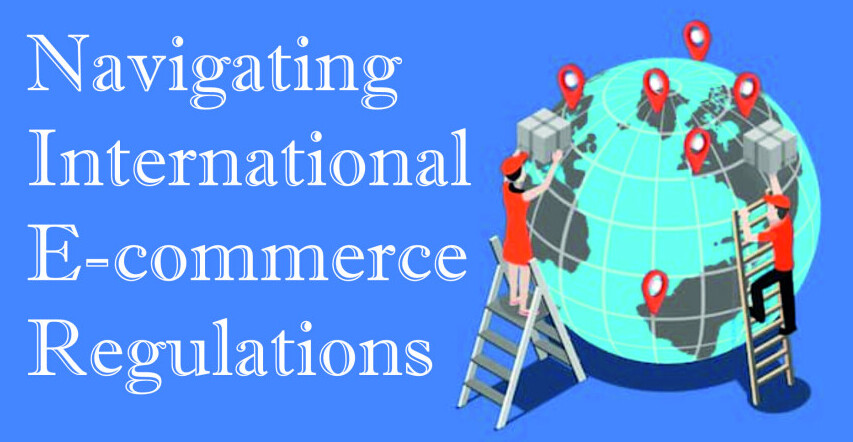
International e-commerce, simply put, is all about buying and selling goods or services across national borders. It’s like window shopping on a global scale, from the comfort of your couch. When businesses tap into international e-commerce, they’re opening themselves up to a worldwide audience, which means more customers and potentially more revenue. This makes it a pretty big deal for businesses looking to expand their reach and stay competitive in the digital age.
The perks of international e-commerce are aplenty. Businesses can diversify their market presence, which helps them broaden their customer base beyond local borders. This diversifies revenue streams and reduces dependency on local economic conditions. Consumers also benefit big time here; they get access to a wider array of products and often at competitive prices.
However, entering the realm of international e-commerce isn’t a cakewalk. You’ll bump into challenges such as handling logistics across borders, navigating different time zones, and even dealing with language barriers. Not to mention, tariffs and taxes that can complicate things further. Understanding these hurdles is key to crafting strategies that smooth the path ahead.
Lucky for us, technology has made enormous strides in making international e-commerce more manageable. With secure payment gateways, real-time tracking systems, and multilingual websites, businesses can effectively reach and engage with a global audience. These tech advancements don’t just enable transactions; they build trust, which is crucial when you’re courting customers oceans away.
Global Frameworks: The UN Model Law on Electronic Commerce

The UN model law on electronic commerce is like a master blueprint for countries to draft their own e-commerce laws. Think of it as the international playbook that helps different countries get on the same page when it comes to digital transactions. Its main goal is to remove obstacles in international e-commerce, making it smoother and more predictable.
By offering a flexible framework, this model law has played a significant role in inspiring national legislation worldwide. Businesses looking to expand internationally should pay attention to it because it sets common standards, ensuring consistency in how e-commerce is regulated across different terrains. This, in turn, simplifies things for companies doing business globally.
The law zeroes in on several core principles. It addresses the legal recognition of electronic transactions, aiming to ensure electronic signatures and contracts are treated just like their paper counterparts. This foundational acceptance is crucial for businesses wanting to transact digitally without legal hiccups.
An added bonus of the UN model law is its impact on dispute resolutions in international trade. By promoting a standardized approach, it helps reduce misunderstandings and offers a level playing field across borders. Knowing these principles will give businesses confidence in the legal backbone supporting international e-commerce.
Understanding these international guidelines can also aid companies in evaluating potential markets or partners, ensuring their practices align with global norms.
The American Approach: Understanding US E-commerce Regulation

In the U.S., the e-commerce regulatory scene is quite a maze, with multiple layers that businesses need to navigate. The Federal Trade Commission (FTC) leads the charge in governing e-commerce, aiming to protect consumers from fraud and ensure fair competition.
One main aspect of US e-commerce regulation is data privacy, a hot topic given today’s digital age. Key legislation such as the Children’s Online Privacy Protection Act (COPPA) and the California Consumer Privacy Act (CCPA) set standards for how personal data should be handled. For businesses, staying on top of these laws is non-negotiable.
Consumer protection laws are also a big deal here. They ensure transparency, requiring clear information on products, services, and pricing to prevent misleading practices. This helps build trust, which is vital for online shopping, where customers can’t physically inspect what they’re buying.
Unlike many countries with a more centralized approach, the US has a dual system where both state and federal regulations can apply. This mix can get tricky as different states might have their own rules, leading to a complex regulatory landscape.
Keeping up with ongoing changes in legislation is crucial for e-commerce players who want to stay compliant and avoid penalties. This ever-evolving arena means businesses need to be agile in adapting to new regulations to maintain smooth operations.
Navigating European Standards: The E-commerce Directive of the EU

The EU’s e-commerce directive is all about setting the ground rules for online services within its member states. It’s essentially a blueprint aiming to make cross-border e-commerce as straightforward as possible while maintaining a high level of consumer protection.
The directive covers several critical areas. One important aspect is the liability of online service providers. It limits the responsibility of intermediaries like hosting services, balancing the need for innovation with legal safeguards against illegal content. For international businesses, understanding these rules is crucial to avoid legal pitfalls.
A standout feature of the directive is its focus on consumer protection measures. This includes ensuring that consumers have clear rights when purchasing online and have access to robust mechanisms when things go awry with a purchase. Clarity here boosts consumer trust, a vital ingredient for successful e-commerce undertakings.
For businesses eyeing the European market, the directive presents unique challenges and opportunities. On one hand, adhering to the directive’s requirements may demand operational adjustments. On the other, it offers a harmonized legal environment for reaching 500 million consumers, creating a sizable market opportunity.
Keeping an eye on updates to the directive is important, as EU regulations are continuously evolving, influenced by digital innovations and changes in market dynamics. Companies ready to adapt to these changes will likely stand out in the competitive e-commerce landscape within Europe.

